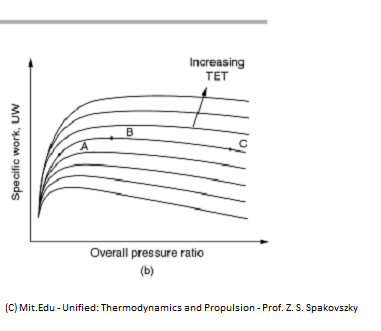Sid wrote:^^
Philip ji, first TD flew in 2001, PV in 2003, all with same engine 404. Also, for LPs (as per your link) it was decided to have 404 in 2003. They also first flew on 2007. All indicating high compatibility with aircraft design.
I agree with Maitya's deduction that from the beginning LCA was designed around 404 not Kaveri. Until or unless Kaveri is 404 clone and easily swappable.
Sidji thanks. Actually the TDs got rolled out with F404 much earlier than their 1st flights - details in the following part of this post.
Philip wrote:Maitya,there are innumerable reports reg. Kaveri being planned for the LCA right from the start.The 404 was chosen only because ...
Continuing development snags with the Kaveri resulted in the 2003 decision to procure the uprated F404-GE-IN20 engine for the eight pre-production Limited Series Production (LSP) aircraft and two naval prototypes. The ADA awarded General Electric a US$105 million contract in February 2004 for development engineering and production of 17 F404-IN20 engines, delivery of which is to begin in 2006.
...
...
Philipji, another long post ... but not sure how any of the links that you posted above says that "
Kaveri being planned for the LCA right from the start" - so pls do post one of those "
innumerable reports" which says Kaveri was "
planned for the LCA right from the start".
But maybe, I think you are mis-understanding the "
Right from Start" bit – does it mean Kaveri was to be made part of the LCA airframe from 1st flight of the demonstrator platform, 1st flight of the prototype platform, 1st flight of the Operational platform or something else?
Anyway here’s a
brief timeline of this:
1. LCA was always intended to fly with F404-GE-F2J3 for the FSED-I phase i.e TD 1/2 + PV 1/2
No sane program management team would risk flying an unproven airframe with an unproven engine.
The dimensional similarity between Kaveri and F404 (e.g Dia - F404 35in vs Kaveri 35.8in, Weight F404 1036Kg vs Kaveri 950-1000Kg etc) are not mere happenstances. The "desired" requiremental dimensions of the LCA power-plant were carefully chosen (in 1987-88 etc) after proper due-diligence of what would be realistically available in 1995-99 or thereabouts.
i.e. in lay-man terms, the dimensions of the intended LCA power-plant (Kaveri) were based on those of forecasted contemporary turbofan engine (that would be available in late 90s) achieving similar Thrust, SFC and a host of other parameters.
Of course, as it is customary in such ab intio development programs, to have the intrinsic design parameters like SFC, OPR, TeT to be a notch above than those that would be available in the contemporary engines during it's developmental phases - more in sync with teh forecasted parameters of engines what would be contemporary during atleast the 1st half of the intended platform's ops life (of 2 decades +).
So not only does the rolled-out LCA TDs (TD1 in 1995 and TD-2 in 1998) had the F404-GE-F2J3 installed on them, but also they were on both PV1 and PV2 in the early 2000s.
All as per planned.
2. Also, as per the original plan (of 1987-88), if Kaveri sub-program succeeded, it was to be fitted onto LCA for the FSED-II phase (PV-3 as the production-prototype variant, PV-4 as the naval variant, and PV-5 as the trainer variant). And of course, then roll-on to the LSPs and SPs as well.
3. So while 1st phase of flight testing of the FSED-I phase was on-going (it itself got delayed due to 1998-sanctions and resultant delays in developing the FBW system), in parallel the Kaveri program was also progressing.
And the Kaveri program started off well actually - core (Kabini) first ran in 1995, full 1st prototype engine (Kaveri) began testing in 1996 and by 1998, all five prototypes (K1-K5/K6) were in testing.
But, in 2003 itself, while LCA was merely into 2 yrs into FSED-I flight testing, the indigenous HPT DS-blades started giving up. So, as a last ditch attempt, to keep the engine program on track, the DS blades were imported from Snecma (this import bit is purely IIRC and I need to cross-check it again).
4. But in mid-2004, the Kaveri failed its high-altitude tests in Russia. So it was then decided, Kaveri will not be ready for the FSED-II phases and GE was awarded a US$105 million contract (in 2004) for 17 F404-IN20 engines for LSPs and NPs (and delivery of which began in 2006).
5. The IAF ASR change (justified, in my opinion) happened in 2004/05 - this led to further delays in re-configuring the basic airframe (and thus further increased weight) to cater to it - so all FSED-II platforms were delayed towards incorporating these changes.
6. PV-1/2/3 and LSP-1 (in 2007) all flew with 2J3 version and LSP-2 with IN20 (in 2008) - followed by other LSPs.
All as per their revised schedule, dictated singularly by the program flight testing schedule - plus the delays due to re-configuring the platform due to ASR change (and of course the prototype building pace by HAL - aka "hand built" platforms).
7. And also due to pt.5 above, the resultant weight increase also made Kaveri completely unsuitable for LCA Mk1. So, in 2007, an additional 24 F404-IN20 afterburning engines were ordered to power the first operational squadron of Tejas fighters – and of course, Kaveri program itself was then officially delinked with the main LCA programme.
So the question remains, where exactly do you see the impact to the LCA platform delivery timelines due to failure/delay in Kaveri front?






